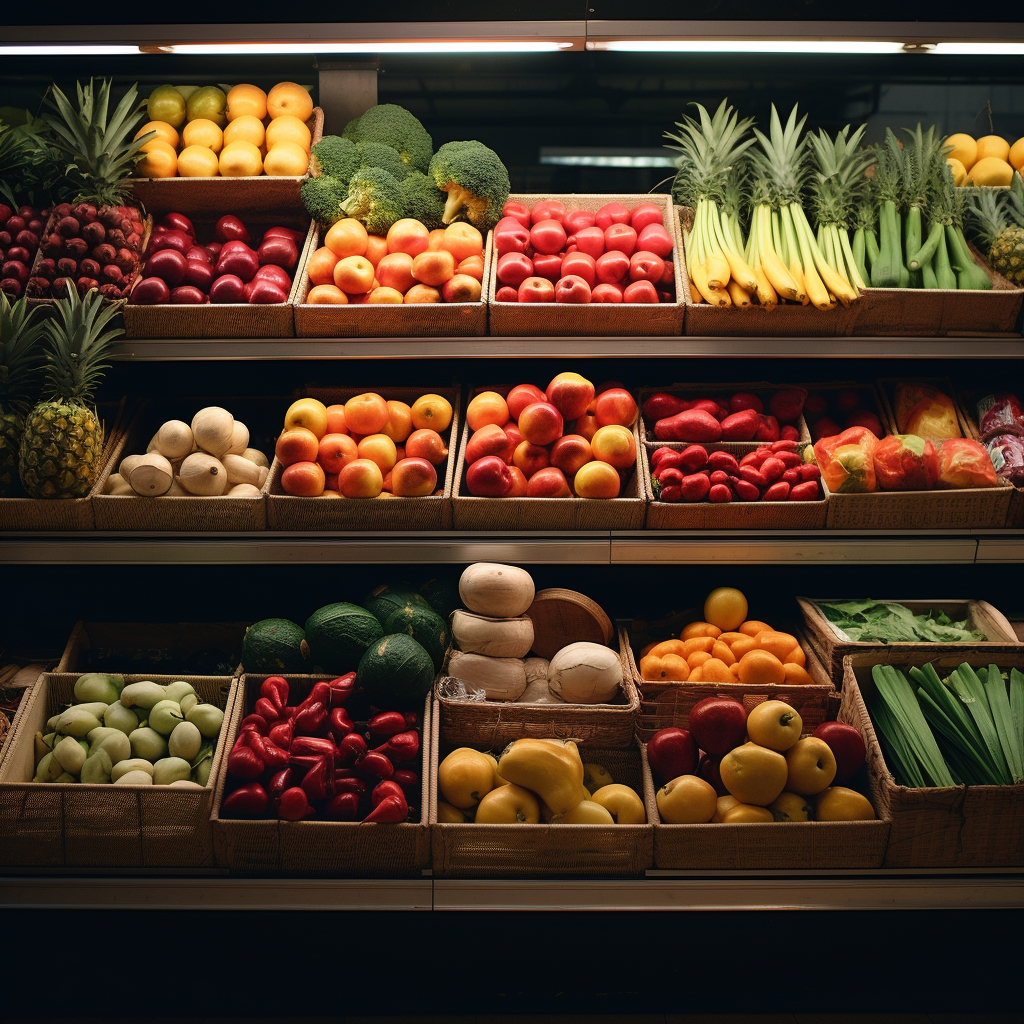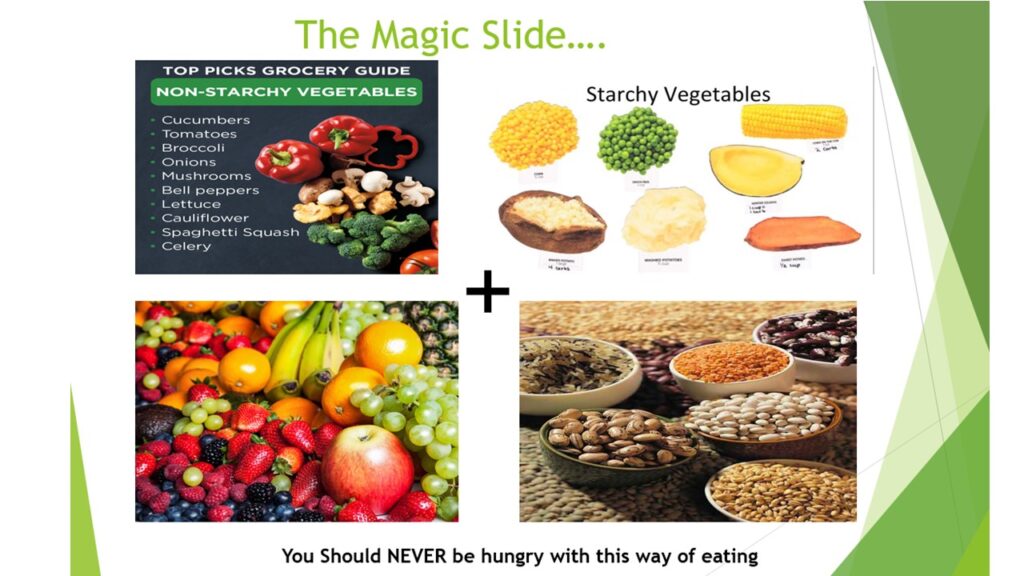by Mike Thomas, NBHWC December 14, 2023
Starting a journey to lose weight can be tough, but the key to lasting success is creating a lifestyle that’s not just healthy but also satisfying. Including plant-based foods in your diet is important for this. In this blog, we’ll talk about balancing non-starchy and starchy veggies on your plate. This balance gives you a bunch of nutrients and energy, making you both healthy and satisfied.

Understanding Non-Starchy Vegetables
Non-starchy vegetables are a treasure trove of nutrients and fiber without the excess calories found in their starchy counterparts. These vegetables are typically low in calories, making them an excellent choice for those looking to shed some pounds. Examples of non-starchy vegetables include leafy greens like spinach and kale, cruciferous vegetables such as broccoli and cauliflower, and colorful options like bell peppers, tomatoes, and cucumbers.

The Role of Starchy Vegetables
On the flip side, starchy vegetables are a great source of complex carbohydrates, providing a sustained release of energy. They include nutrient-rich options like sweet potatoes, butternut squash, brown rice, and legumes such as beans. While these vegetables contain more calories than non-starchy varieties, they offer essential nutrients like fiber, vitamins, and minerals.
Three Benefits of Balancing Non-Starchy and Starchy Vegetables

1. Sustainable Weight Management:
– This is HUGE!! No more Yo-Yo dieting!
– The beauty of incorporating both non-starchy and starchy vegetables is that it provides a balanced, sustainable approach to weight management.
– Non-starchy vegetables help control calorie intake, while starchy vegetables offer the energy needed for daily activities.
– This balance helps individuals maintain a healthy weight without feeling deprived.
2. Improved Nutrient Intake:
– By diversifying your plate with a variety of vegetables, you ensure a wide range of essential nutrients.
– Non-starchy vegetables contribute vitamins, minerals, and antioxidants, while starchy vegetables provide complex carbohydrates and additional vitamins.
– Both provide incredibly important FIBER.
– Only 3 percent of Americans get their daily requirement of fiber.
– This diversity supports overall health and well-being.

3. Reduced Cravings and Satisfaction:
– I have a future blog about the topic of cravings. Coming soon! Please know that a well-balanced plate not only nourishes the body but also satisfies the taste buds.
– The combination of non-starchy and starchy vegetables creates a satisfying and flavorful meal, reducing the likelihood of cravings for unhealthy snacks.
– This satisfaction contributes to a positive relationship with food and promotes adherence to a healthy eating pattern.
Balancing Act on Your Plate: The 50:50 Plate

Creating a well-balanced plate involves combining these two categories of vegetables strategically. Imagine your plate as a canvas, where non-starchy and starchy vegetables each contribute an equal portion of the space on your plate. For instance, you might fill half your plate with leafy greens and colorful vegetables and the other half with a starchy component like sweet potatoes or brown rice.
Examples
Here are a few recipes that exemplify the 50:50 plate concept. Each of these thoughtfully crafted to showcase the harmonious balance of non-starchy and starchy vegetables:
– An enticing blend of non-starchy veggies paired with nutritious brown rice.

– Indulge in a delightful bowl of oatmeal adorned with fresh fruits, offering both deliciousness and a generous dose of fiber. This can be made in 5 minutes!
3. Veggie Stew in the Instant Pot
– Experience the best of both worlds with a hearty stew featuring a mix of non-starchy and starchy vegetables, all conveniently prepared in the Instant Pot.
– Delight your taste buds with a classic spinach lasagna from Forks Over Knives that combines the goodness of leafy greens with the satisfying richness of starchy layers.

– Elevate your grilling experience with flavorful veggie kabobs and brown rice, highlighting the vibrant colors and textures of various non-starchy and starchy vegetables.
These recipes not only exemplify the art of balancing your plate but also promise a symphony of flavors that make healthy eating an enjoyable and fulfilling experience. If you would like more recipes feel free to click on the link below for more mouthwatering goodness!
The Long-Term Approach
One of the pitfalls of traditional diets is their short-lived nature. Many individuals can stick to a strict regimen for a short period, but sustaining such practices becomes challenging over time. The key is to shift from a diet mindset to a lifestyle approach—one that is both enjoyable and maintainable in the long run.
The Magic Slide!

Having shared insights and knowledge within my local community and online, usually through PowerPoint presentations, I’ve often referred to this crucial aspect of weight loss and plant-centric living on one specific slide. I call this slide the “Magic Slide.” This metaphor encapsulates the significant role it plays in empowering individuals to pursue improved health in a sustainable and meaningful way. Here is a quick 6 minute video of me talking about this topic:
As we conclude our exploration of the delicate balance between non-starchy and starchy vegetables for fostering a healthier lifestyle, it’s important to recognize that the journey towards sustainable weight management is both deeply personal and transformative. If you’re ready to embrace this path or have questions about seamlessly integrating more plant-based options into your diet, I encourage you to take the next step.
I’m here to offer you a free, no-obligation consultation where we can discuss your unique goals, challenges, and aspirations. Together, we can tailor a plan that aligns with your lifestyle, ensuring that you not only reach your desired weight but also embrace a fulfilling and sustainable approach to wellness.
Here’s to your well-being and the exciting road ahead!
Mike
This blog is for educational and informational purposes only and solely as a self-help tool for your own use. I am not providing medical, psychological, or nutrition therapy advice. You should not use this information to diagnose or treat any health problems or illnesses without consulting your own medical practitioner. Always seek the advice of your own medical practitioner and/or mental health provider about your specific health situation. For my full Disclaimer, please go to CoachMikeThomas.com.
